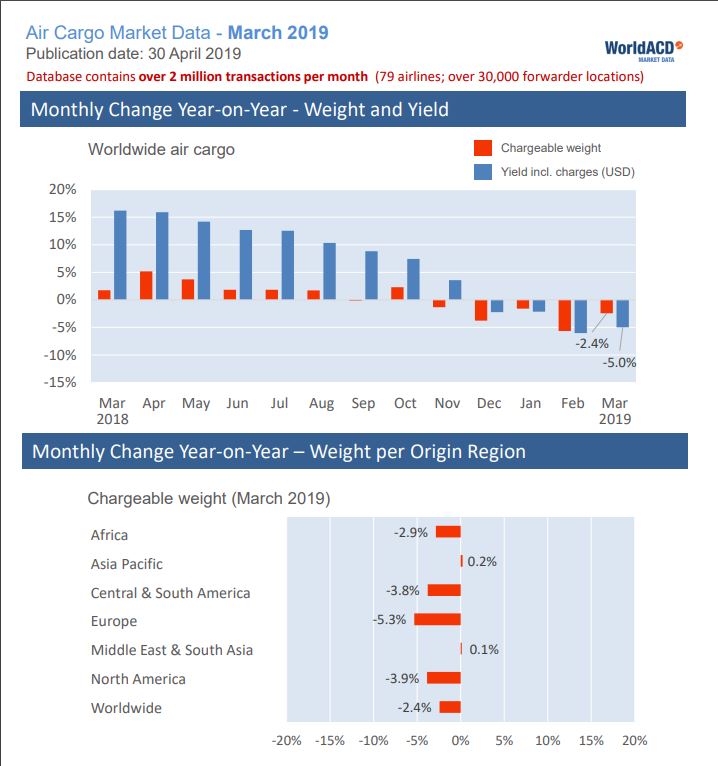WorldACD shows 3.1% decline in volumes for March
Following the deep declines in air cargo volumes at the start of the year, March volumes rose by 25% compared to February, but it was not enough to avoid a 3.1% overall drop in first-quarter volumes, compared to the previous year, reported market analysis firm WorldACD.
A total of 23 of the 36 geographical markets covered by WorldACD showed year-over-year declines. For instance, while the Asia-Pacific region’s volumes dropped 7.6%, y-o-y, in Q1, with five of the ten markets to/from Asia-Pacific performed below the world average, including Asia-Pacific to Europe (-4.9%), Europe to Asia-Pacific (-4.3%) and North America to Asia-Pacific (-4.7%).
Regarding the normally high-volume Asia-Pacific powerhouse for air cargo, “It has become clear over the past half year that the engine runs much less smoothly than before,” WorldACD concluded.
There was some good news, however. The Europe to North America segment grew by 0.6%, y-o-y, as did Asia-Pacific to Middle East & South Asia (MESA) (2.9%), Africa to Europe (2.1%) and intra-MESA (2.6%), the company said. In some smaller markets, the numbers were even stronger, including Latin America to Asia Pacific and Africa to North America, each reporting 18% gains.
WorldACD added that the largest exporting countries with y-o-y growth in Q1 were India, the United Kingdom, Australia, Vietnam, Kenya, Ecuador, Turkey and Chile, which reported y-o-y growth ranging from 0.1% to 6.7%. “With the exception of Vietnam and Kenya, growth in these origins was entirely thanks to growth in special cargo, most notably fish and seafood,” the market analysis form noted.
Among the world’s Top 20 air cargo agents, only four managed to realize y-o-y growth in Q1: Expeditors, DSV, Agility and Expolanka, World ACD added Among the other 16, decreases ranged from 0.2% to 16.4%.
During March, general cargo volume fell 4.8%, y-o-y, while special cargo rose 3.5%, compared to the previous year’s March totals. Traffic, measured in direct tonne kilometers, dipped 1.8%, y-o-y, while yield increased to US$1.80. The cargo load factor for the month dropped by 1.8 percentage-points, y-o-y. High-tech and other vulnerable goods, which is the largest category of “special cargo,” increased by 12.9%, y-o-y.
Don’t expect much to improve, however, for the next report. “All in all,” WorldACD concluded, “we do not expect the April figures to cause a change in the trend seen so far this year.”
For more details on yields and route performance, see worldacd.com.





